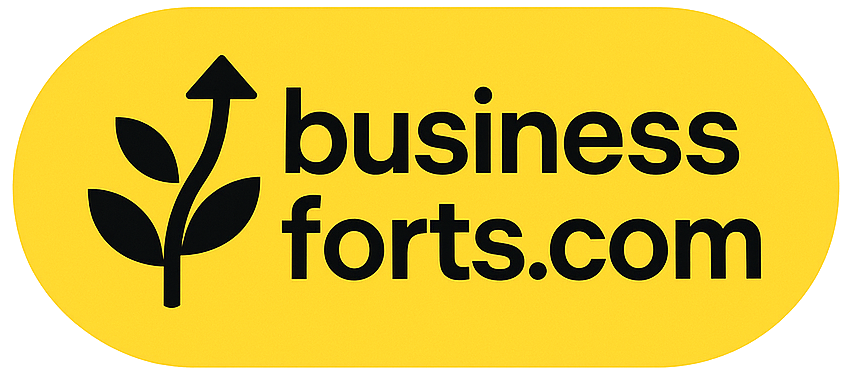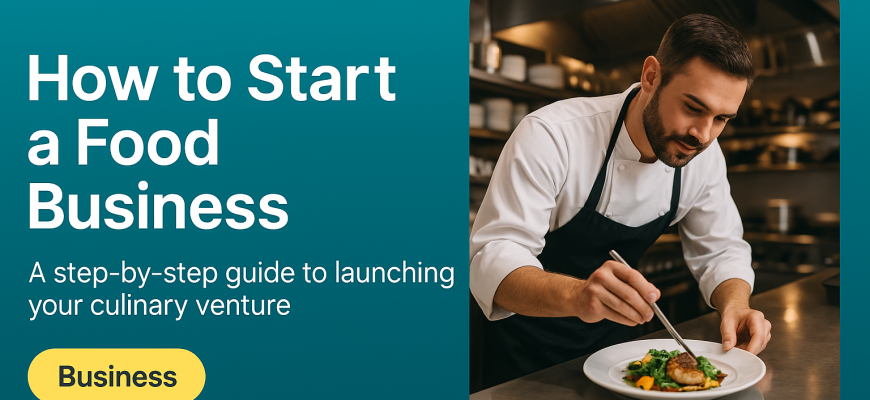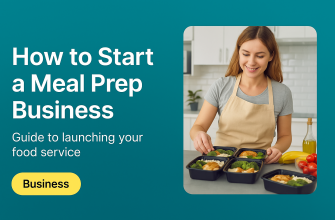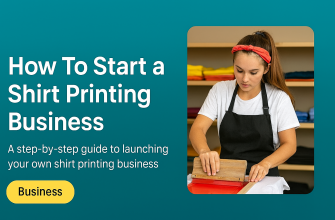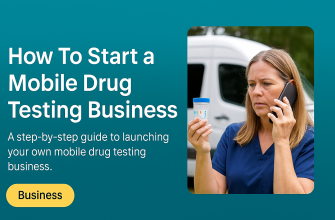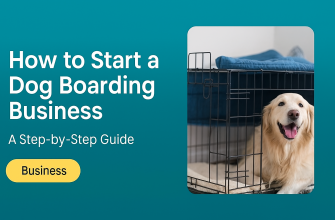Turning a passion for food into a thriving business is an exciting journey – and one that more women are embarking on every day. In fact, women now own roughly 43% of small businesses in the U.S., with over 1,800 new women-owned companies launched each day. The food industry is a particularly popular path, comprising about 14% of women-owned businesses. If you’ve ever dreamed of selling your cupcakes, catering events, hitting the road with a food truck, or bottling grandma’s secret sauce, you’re in great company. As a business coach who has guided many women entrepreneurs, I’m here to tell you: you can turn those culinary dreams into a viable business with the right plan, mindset, and support.
In this guide, we’ll explore different types of food businesses you can start, walk through the key steps to launch from scratch, and demystify the legal and regulatory basics – all tailored for beginners.
Types of Food Businesses to Consider
Not all food businesses are alike – you have options to suit your lifestyle, resources, and passions. Here’s a brief overview of popular avenues, each with its own flavor:
-
Home-Based Baking: Launching a baking business from home is a common starting point. Many states have “cottage food” laws that allow entrepreneurs to sell certain low-risk foods made in a home kitchen with minimal regulation (think baked goods, jams, candies). This means you can start small – baking cookies or cakes for local sale – often without needing a full commercial kitchen. It’s budget-friendly and perfect for testing your recipes. Tip: Check your state’s cottage food rules on what you can sell and any sales limits, and always maintain high cleanliness since home kitchens aren’t routinely inspected.
-
Catering Services: If you love cooking for events or special occasions, a catering business might be your calling. Caterers typically prepare meals for parties, corporate events, weddings, etc., often working on a per-event contract. You might start in your home kitchen (if allowed) or rent a commercial kitchen for larger gigs. Keep in mind that catering is a growing industry (projected 5.6% annual growth through 2027) – there’s plenty of opportunity! You’ll need to be organized and creative, crafting menus that can be produced efficiently for crowds. Building a strong reputation is key, as word-of-mouth and reviews will drive your success.
-
Food Trucks: Food trucks let you take your cuisine on the road. This is a more mobile alternative to a brick-and-mortar restaurant, with lower overhead costs and the freedom to change locations. In recent years, food trucks have exploded in popularity, becoming a trendy part of the food scene in many cities. Starting a food truck still requires significant planning – you’ll need to invest in a vehicle outfitted as a kitchen, develop a unique menu concept, and navigate local rules for where and when trucks can operate. But for many, the excitement of serving customers street-side and the flexibility of being your own moving restaurant make it worth it. Pro: You can test different markets/neighborhoods; Con: you must contend with permits, parking limitations, and weather.
-
Packaged Food Products: Maybe your talent lies in a product – a special hot sauce, organic granola, or vegan cookies that people have to have. Selling packaged foods (also known as consumer packaged goods or CPG) means you’ll be producing an item to sell in stores, online, or at farmers’ markets. This type of business can start small at home under cottage food laws (for allowable products) and then grow into using commercial kitchens or co-packers as demand rises. The market for artisanal and specialty foods is booming – U.S. specialty food sales grew by 149% from 2013 to 2023, reaching over $200 billion – so it’s a promising field. Keep in mind, packaged products bring extra considerations like branding, packaging design, and labeling requirements (more on that later). Success here often comes from filling a niche (e.g. allergen-friendly snacks or locally sourced sauces) and starting with local outlets or online sales to build a following.
Each of these paths can start as a one-woman operation from your home or community. Many successful food entrepreneurs began by selling to friends, at local markets, or on social media before scaling up. Think about which model excites you most and fits your life – that’s the one you’ll be most motivated to grow!
Beginner-Friendly Steps to Start a Food Business
Starting a business may feel overwhelming, but it becomes manageable when you break it down into steps. Below are practical, beginner-friendly steps to take your food business idea from concept to reality:
-
Find Your Niche and Do Your Research: Every great food business begins with a clear idea. What product or service will you offer, and what makes it unique? Identify your niche – maybe it’s gluten-free desserts for health-conscious moms, or a taco truck fusing two cuisines you love. Research who your target customers would be and what’s already in your local market. Are people craving what you plan to offer? Check out competitors or similar businesses for inspiration and gaps you can fill. This early research will validate that your idea has an audience (and save you from investing in a concept that might need tweaking).
-
Write a Simple Business Plan: Don’t let the term business plan intimidate you – it doesn’t have to be a 50-page formal document. Start with a one- or two-page plan covering the basics: your business mission, target market, product/service description, pricing, and initial financial plan (budget and pricing to ensure you can profit). Outline how you’ll produce the food (home kitchen, rented kitchen, etc.) and how you’ll sell it (online, farmers market, catering events, etc.). This plan is just for you (and any partners or lenders) to clarify the roadmap. It can be very straightforward; the point is to make you think through how you’ll operate and make money. As you grow, you can expand the plan. For now, clarity is key. Writing down your plan also builds confidence – it’s your business blueprint.
-
Take Care of Business Fundamentals: Now that you have a plan, handle the foundational setup. Choose a business name (make sure it’s not already taken in your state) and decide on a business structure. Many small starters begin as a sole proprietorship or single-member LLC. Forming an LLC can be wise as it separates your business legally from personal assets – something to consider for liability protection once you start selling food. Register your business with the state or county as required (this often involves a small fee and paperwork, which your state’s business website will guide you through). Also, apply for an EIN (Employer Identification Number) from the IRS – it’s free and essentially a business social security number, useful even if you won’t have employees yet, as it lets you open a business bank account and simplifies taxes. Setting up a dedicated business bank account is a smart move to keep finances clear. In short: formalize your business on paper so you can operate legitimately and keep finances orderly.
-
Secure Permits and Licenses: Food businesses are regulated, so you’ll need a few permits/licenses to legally operate. The exact requirements vary by location and business type (we’ll dive deeper into these in the next section), but common ones include a general business license from your city or county, a seller’s permit if your state has sales tax, and specific food-related permits. For example, a caterer might need a catering permit, and food truck owners often need a mobile vendor permit. If you’re working from home, many places require a home occupation permit to run a business out of your house. You’ll also likely need to complete a food safety course or get a food handler’s certification (often something like a ServSafe Food Manager certificate) to ensure you understand safe food handling practices – many states mandate that at least one person in a food business is certified in food safety. Don’t worry, these steps are very doable and local authorities will tell you exactly what you need. Your local Health Department and County Clerk are great resources to ask about required permits. (We’ll list key legal considerations in the next section too.)
-
Develop Your Product and Pricing: This is the fun part – perfecting your recipes, menus, or product formulations! Spend time refining the taste, presentation, and portion sizes of whatever you’ll sell. If it’s a menu (for catering or a food truck), consider a small selection of crowd-pleasers you do really well, rather than too many items. For packaged goods, ensure your recipe is consistent and consider shelf life and packaging that keeps it fresh. Once your offerings are set, figure out your pricing. Calculate your ingredient costs and overhead (packaging, fuel for deliveries, etc.), then set a price that covers these costs and leaves you a margin for profit. Beginners sometimes undercharge – remember, your time and skill have value! Research what competitors charge for similar items as a reference. It’s okay to start with slightly lower “entry” prices to attract early customers, but make sure it’s sustainable for you. Don’t forget to account for things like fees (if selling on a platform or at a market) and taxes in your pricing.
-
Set Up Your Production Space and Supplies: Ensure you have the equipment and space you need to start producing food at a small scale. For a home-based business, this might mean decluttering your kitchen and buying some extra bakeware or storage. If you’re doing catering or larger scale cooking, consider using a shared commercial kitchen (many cities have incubator kitchens you can rent by the hour). For a food truck, you’ll be outfitting the truck with proper appliances – make sure everything meets local fire and safety codes. Create a list of your needed supplies: ingredients (find reliable suppliers, maybe restaurant wholesale clubs or local farms), packaging materials (boxes, labels, etc.), and any special tools. Start small – you don’t need the fanciest equipment at the beginning, just the essentials to safely make your food. As you grow and reinvest profits, you can upgrade. Also, establish a process for maintaining cleanliness and organization in your workspace; good operations habits are key in food businesses from day one.
-
Build Your Brand and Market Yourself: Even at the start, branding and marketing will help you gain customers. Come up with a business name (if you haven’t already) and a simple brand identity – this could be as basic as choosing a color scheme and making a free logo on Canva. Make social media pages to showcase your food (Instagram and Facebook are great for food businesses – post yummy photos!). If you’re targeting local customers, spread the word in community groups or local online boards. For instance, many home bakers get their first orders by posting in neighborhood Facebook groups or handing out samples at local events. If you have a budget, you might create simple business cards or flyers to leave at complementary businesses (like bridal shops if you cater weddings, or gyms if you make healthy snacks). The key is to let people know you exist and share your story – people love to support passionate small business owners, especially when there’s a personal story behind the product. Don’t be shy about telling folks what you’re doing! Early on, much of your business may come from friends, word-of-mouth, and local networking. Every small customer win is progress.
-
Start Small, Test, and Learn: It’s finally time to start selling! Launch on a small scale to test the waters and learn as you go. This might mean taking a few custom orders before you announce broadly, or doing a soft launch at a local farmer’s market or a pop-up event. By starting small, you can gather feedback and work out kinks in your process without big pressure. Pay attention to what customers say – did they love the taste? Was the portion satisfying? Use this feedback to refine your offerings and customer service. It’s normal to make adjustments in the early stages. Each sale or event will teach you something to improve. Celebrate those first sales – you’re officially an entrepreneur now! Also, use this stage to ensure you’re keeping records of income and expenses (even a simple spreadsheet is fine) and staying on top of any required paperwork or renewals for your permits.
-
Stay Compliant and Plan for Growth: As you stabilize your business, keep up with any ongoing requirements (like renewing licenses or permits annually, filing taxes, etc.). Ensure you continue to practice good food safety and renew certifications when needed. It’s wise to consider getting business insurance at this point if you haven’t (liability insurance can protect you if, say, someone claimed they got sick from your food, and is often quite affordable). With the basics running smoothly, you can start planning how to grow – maybe expanding your menu, increasing production, or opening a physical location someday. Set new goals, like “cater 10 events this year” or “get my product into 5 local stores.” Growth can be gradual; the important part is consistently delivering quality and delighting your customers. Remember: every big business started small. Stay persistent, keep learning, and lean on your support networks (mentors, fellow women entrepreneurs, local business organizations) as you expand. You’ve got this!
Throughout these steps, maintain a positive, can-do mindset. Starting a business is a learning curve for everyone – you’ll figure it out piece by piece. Be patient with yourself and celebrate milestones (first sale, first 5-star review, etc.). Next, let’s go a bit deeper into those “not-so-fun” but crucial legal and regulatory steps, so you feel confident navigating the rules that come with selling food.
Navigating Legal and Regulatory Requirements
When it comes to food businesses, safety and legality are paramount – and yes, there are some bureaucratic hoops to jump through. It may not be the most exciting part of entrepreneurship, but knowing the basics will save you headaches and protect your business (and customers) in the long run. Below are key legal and regulatory considerations in the U.S. that beginners should understand:
-
Business Registration & Licensing: Ensure your business itself is properly registered and licensed. This typically means obtaining a general business license from your city or county (sometimes called a business tax certificate) – essentially permission to do business in that locale. If you named your business anything other than your own name, you may need to file a “Doing Business As” (DBA) name registration. Also, register for a state sales tax permit (often through your state’s Department of Revenue) if you will be selling taxable goods – many states tax prepared food or certain food products, so you’ll likely need this seller’s permit to collect sales tax legally. For example, if you sell at a farmers market, the organizers might ask for your sales tax ID. Taking care of these basic licenses up front keeps you in good standing and avoids fines.
-
Health Permits and Inspections: Because you’re dealing with food, the local Health Department will be involved in some capacity. Most jurisdictions require a health department permit or food service establishment license for any business selling food to the public. If you are preparing food in a commercial kitchen or running a food truck or catering, you’ll likely undergo a kitchen inspection from the health authorities to ensure you meet sanitation standards (proper food storage, cooking temperatures, hygiene, etc.). Home-based businesses operating under cottage food laws may be exempt from routine inspections in some states, but cottage food producers still must follow specific guidelines and are sometimes required to register with the health department or take a food safety course. Always check your state/local rules – some states require home kitchens to be inspected and permitted, while others simply set rules you must follow. Bottom line: get the necessary food handling permits and expect that officials can inspect your operation for compliance. This is to protect the public and also your business – you want to be known for safe, quality food.
-
Food Safety Certification: As mentioned earlier, most states insist that at least one person in a food business (often the owner or manager) has a food safety manager certification. Programs like ServSafe (offered by the National Restaurant Association) are widely recognized. For instance, a state might require each establishment to have a “certified food handler” on staff within 3-6 months of opening. Even if you’re just starting at home, getting a food safety certification is highly recommended – it teaches you about preventing contamination, proper cooking temps, allergy awareness, etc. This knowledge protects your customers and your reputation. Classes and exams for certification are accessible (often under $200, sometimes far less for a simple food handler card). Some cottage food laws mandate a basic food handler course as well. Display your certificate proudly – it builds customer trust knowing you’ve been trained in food safety.
-
Local Zoning and Permits for Locations: One oft-overlooked factor is zoning laws – basically, rules about what kind of business can operate where. If you’re running a business from home, verify that home businesses are allowed in your area (most residential areas do allow small home-based businesses, as long as you don’t disturb the neighbors). For example, some cities ban any on-site retail sales in residential zones, meaning you can bake at home but not have customers coming to pick up daily – you might only be allowed to deliver or use farmers markets. Usually, small-scale producers are fine, but it’s worth checking if you need a special home occupation permit (many places require this one-time permit to officially acknowledge your home-based business). If you plan to open a commercial space or use a commercial kitchen, ensure the property is zoned for food service. Food trucks have their own rules: cities often designate where food trucks can park and vend (you might need a permit for specific food truck zones or events). Always ask your city or county about relevant zoning or location permits before you invest too much – it’s usually a simple inquiry that can save trouble. The good news is that in most places, small, non-disruptive businesses are welcomed in residential areas as long as the home is primarily a residence and you aren’t causing nuisances. Just do your due diligence and keep neighbors on your side (maybe win them over with some free samples!).
-
Product Labeling and Regulations (for Packaged Foods): If you sell packaged food products (anything wrapped or bottled for sale), there are additional regulations to follow. The FDA and state agencies have labeling requirements to ensure consumer safety and transparency. All packaged foods must include proper labels, typically showing the product name, ingredients (in descending order by weight), any common allergen warnings, net weight, and the manufacturer’s or distributor’s name and address. If you make any health claims or use terms like “organic,” there are specific rules around those too. Nutrition Facts panels are generally required if you sell beyond a certain amount or wholesale – though small businesses can be exempt from nutrition panels if selling direct-to-consumer under certain thresholds. That said, providing nutrition info is a good practice as you grow. Pro tip: The FDA’s Food Labeling Guide is a useful reference (and many templates exist to help create compliant labels). Additionally, if you plan to ship or sell interstate, you may need to register your facility with the FDA under the Food Safety Modernization Act (small local businesses often are exempt, especially under cottage food laws, but once you scale up it becomes applicable). Don’t let this scare you – for a local or home startup, labeling rules are manageable. Just be honest and clear on your labels, and update them as required by law. It protects consumers (like those with allergies) and shows you run a professional operation.
-
Insurance and Liability: While not a “permit,” getting proper business insurance is a legal safety net. Food businesses should strongly consider general liability insurance at minimum – this covers accidents or illnesses that could be associated with your product. If you have a food truck or do deliveries, commercial auto insurance is important. Some states or events might require you to show a Certificate of Insurance to participate (for example, a festival might ask food vendors for proof of $1M liability coverage). Insurance costs can vary, but for small operations there are affordable options (sometimes under $50/month for home-based business liability). It’s worth the peace of mind. This way, if an unexpected incident occurs, you’re protected financially and legally. As your business grows and if you hire employees, you’ll need to look into workers’ compensation insurance as required by law. In short, think of insurance as part of your legal foundation – you hope to never need it, but it’s crucial to have.
I know this is a lot of detail – and no one expects you to become a legal expert overnight. The main takeaway is: take the legal steps seriously, but tackle them one at a time. Contact your local small business office or Women’s Business Center if you need guidance; they often have checklists for new businesses. Many entrepreneurs before you have navigated these requirements, and you can absolutely manage them too. Getting properly licensed and informed not only keeps you out of trouble, but it also gives you confidence to operate and grow without fear. You’re building a solid foundation for long-term success!
Empowering Your Journey from Idea to Success
Stepping into the world of entrepreneurship is a bold and empowering move – especially in the food industry, where you get to share your creativity and culture with others through something as universal as food. As we wrap up, I want to leave you with encouragement and a big virtual high-five. You have what it takes to start this food business, and you don’t have to do it alone.
Remember that every famous bakery, catering company, or product brand began with a single step – a first sale, a first fan, a first recipe trial. There will be challenges (there always are in business), but there will also be incredible highs – like the first time a customer says your pie is the best they’ve ever tasted, or when you hit your first 100 sales and realize how far you’ve come. Whenever you face obstacles or self-doubt, come back to why you started. Maybe it’s for creative fulfillment, financial independence, or to be a role model for your kids – that core motivation will drive you through tough days.
As a woman entrepreneur, know that you are part of a growing community blazing trails. Women around the country are launching and scaling food businesses – from home kitchens to national brands – proving every day that we belong in this industry and can succeed wildly at it. Nearly half of U.S. small businesses are women-owned now, and the food sector in particular has seen women make a strong mark. Whenever you need support or advice, don’t hesitate to reach out – whether it’s to a local entrepreneur meetup, a Facebook group for women bakers, or resources like the SBA’s Women’s Business Centers. There is a network of people ready to cheer you on and help you solve problems.
Finally, maintain a balance of professionalism and passion. Treat your new venture seriously – set goals, keep records, continually learn about marketing or finance – but also let your passion shine through in your brand. Your story and authenticity are your superpowers; they will attract customers who connect with you and what you stand for. Be proud of being a beginner, because it means you’re brave enough to start. With each day you run your business, you’re not a beginner anymore – you’re an owner, learning and improving.
In conclusion, whether you’re whipping up brownies in your home oven or planning the next hit food truck, believe in yourself and take it step by step. I’m rooting for you every step of the way. Here’s to turning your apron into the symbol of a successful enterprise! You’ve got this – now go out there and cook up your business dream.
